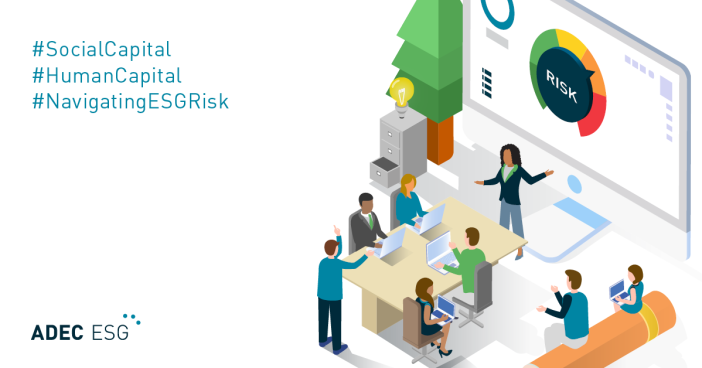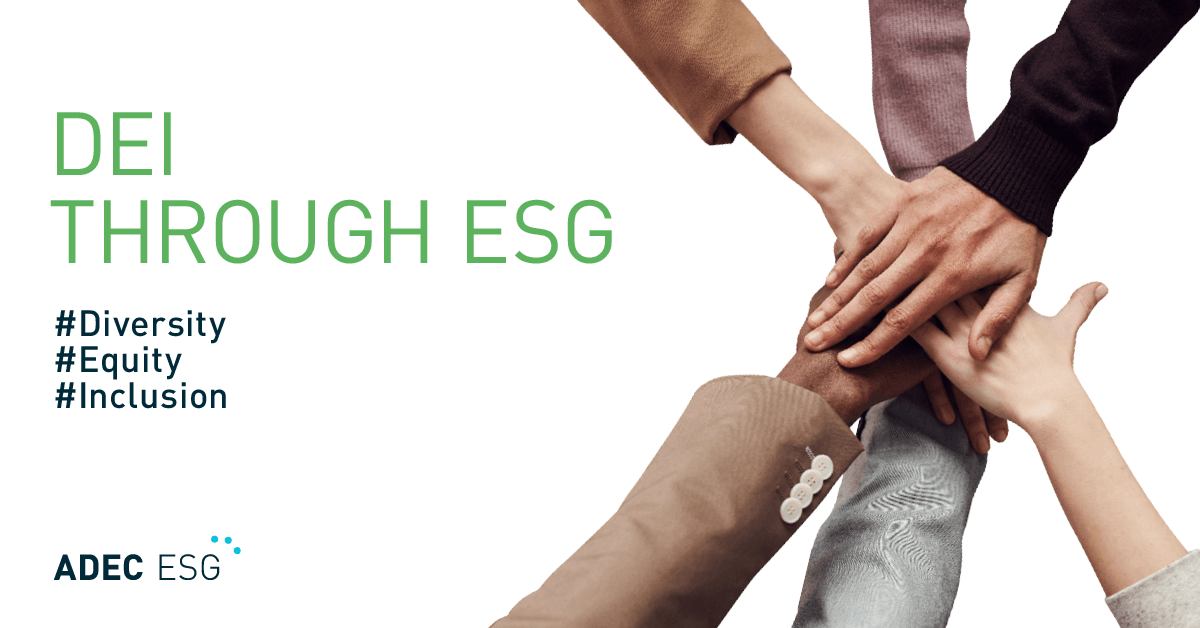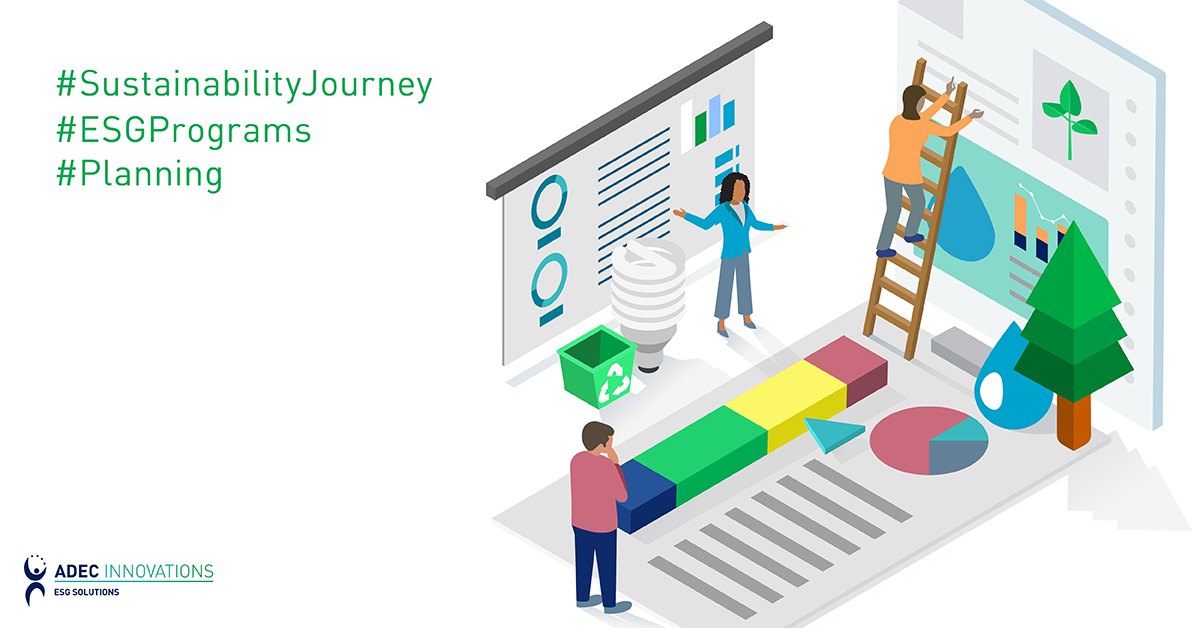In the realm of ESG considerations, we often place significant emphasis on the environmental and governance pillars, while the social pillar, which encompasses critical topics such as labor rights, human rights, diversity, and community relations, is often overlooked and considered less imperative.
While it’s true that some ESG raters don’t always assign equal weight to the social pillar, employees, stakeholders, investors, and—critically—consumers often attribute more weight to the social pillar than the others, increasing the risk of reputational damage when the social pillar is overlooked.
The key to successfully mitigating risk within the social factor requires understanding the difference between human capital and social capital—and the inherent risks they bring. In this blog post, we’ll dive into the key distinctions between human capital risk and social capital risk, shedding a light on their significance, how they intersect, and how they can impact companies.
Understanding human capital risk
Human capital risk addresses vulnerabilities that may arise within an organization, inhibiting a company from achieving its goals. Common human capital risk factors include:
- Talent Acquisition: Recruiting and retaining top talent is an important aspect of human capital management. Companies that fail to attract and retain skilled employees can find it difficult to achieve their objectives.
- Employee Performance: Employee productivity and effectivity directly impact a company’s performance. If the performance of employees decreases, it can lead to decreased efficiency and competitiveness.
- Workforce Development: Investing in employee development and continuous improvement is essential for staying competitive, and companies that neglect workforce development risk falling behind.
- Compliance with Labor and Anti-Discrimination Laws: The most commonly understood component of human capital risk is legal compliance. Failure to comply with labor laws and anti-discrimination laws can result in legal issues, fines, and damaged reputation.
- Worker Health and Safety: Employee well-being and safety are paramount. Failing to account for these can open a company up to risks such as accidents, injuries, lawsuits, and tarnished corporate image.
Understanding social capital risk
Social capital risk encompasses risks arising from external factors that can influence a company’s operations and brand image. Common social capital risk factors include:
- Trust and Reputation: Companies that ignore or overstate their commitments, or betray the trust of stakeholders, including consumers and communities, expose themselves to significant reputational risk.
- Supply Chain and Collaboration: A company’s supply chain is a crucial intersection for both human capital and social capital. Failure to mitigate human capital risks, such as complying with labor laws or ensuring worker safety, can not only expose a company to legal issues, but also poses a threat to its reputation. Additionally, in today’s interconnected world, where companies frequently depend on partnerships and collaborations, a breakdown in these relationships can not only disrupt supply chains, but also hinder overall business operations.
- Community Relations: Establishing positive relationships with the communities in which a company operates is of utmost importance. Neglecting these relationships can spark protests, boycotts, and resistance from local community stakeholders, posing a threat to operations and reputation. Maintaining strong community relationships is essential for sustainable business practices and positive public image.
- Employee Relations: Employee relations is another issue that lies at the intersection of human capital and social capital risks. Happy, engaged employees act as brand ambassadors and positively contribute to a company’s reputation.
The danger of ignoring social capital risk
Human capital risk is typically prioritized by companies as a crucial aspect of organizational management due to its relatively predictable nature and associated costs. In contrast, social capital risk is often overlooked, primarily because of a misconception that it is unpredictable. However, dismissing social capital risk can result in severe consequences.
In today’s digital age, where a tweet about an executive’s conduct or a video of an employee’s inappropriate behavior can quickly diminish stock valuation and tarnish a company’s image, the importance of addressing social capital risk cannot be overstated. The repercussions of ignoring social capital risk can be both immediate and long-lasting. Let’s look at some real-world examples of the financial consequences that companies have faced due to neglecting their social capital.
Case study: #MeToo
In October 2017, actress and humanitarian Ashley Judd accused Hollywood media mogul Harvey Weinstein of sexual misconduct, in a story published by the New York Times. The story quickly went viral across social media platforms, culminating in millions of people sharing their own #MeToo stories and naming names. While many corporations were initially slow to respond or sought to mitigate damage by providing counter-explanations to discredit the allegations, online communities showed no mercy.
The impact:
- By October 2018, just one year after #MeToo, more than 200 powerful men lost their jobs or major roles, including prominent names such as Matt Lauer, Bill O’Reilly, U.S. Senator Al Franken, Olympic Gymnastics Team Physician Larry Nassar, Wynn Resorts CEO Steve Wynn, and CBS Chairman and CEO Leslie Moonves.
- A fifteen-year high in CEO firings, according to the Conference Board’s 2019 CEO Succession Report.
- Research published in the Journal of Corporate Finance found that the stock market value of a listed company fell by 1.5%, for an average impact of $450 million, within a day following sexual harassment claims.
The powerful response of the #MeToo movement across social media showcased how heavily corporate reputations and the careers of influential figures can be impacted by social consciousness spreading across social media.
In the next example, we’ll look at how a collaborator relationship had devastating consequences intersecting both the human capital and social capital risk spheres.
Case study: Adidas x Yeezy
When the first Yeezy line by Adidas was released in 2015, they quickly became one of the most coveted sneakers on the market and helped boost Adidas’ sales by a reported 14% and their net income by a reported 10% in the same year. By 2021, Swiss investment bank UBS would estimate the value of the Yeezy line at between $3.2 and $4.7 billion.
That all came crashing down in Q4 2022, when a string of erratic and discriminatory behavior led consumers to #boycott Kanye West’s brands, including Yeezy. In October 2022, an episode of the podcast Drink Champs was released, wherein West repeated antisemitic conspiracy theories and claimed “I can say antisemitic things, and Adidas can’t drop me.” Within hours of the podcast release, #BoycottAdidas had spread like wildfire, but it wasn’t until a week later that Adidas publicly responded and cut ties with the rapper.
The impact:
- In the week between the podcast release and Adidas publicly cutting ties with the rapper, the company would see a stock value decrease of roughly 17.6% per share, dropping from a $57.65 opening value on October 17 to a $47.50 opening share value on October 25.
- In November 2022, Rolling Stone would publish an article detailing an open letter from prominent former Yeezy line employees, claiming that Adidas executives had known about West’s “terrorizing behavior” that included bullying, sexual harassment, and discrimination in the workplace, and claimed that Adidas executives turned a blind eye to the behavior for years, further exacerbating reputational damage the brand faced and eliminating any positive feelings consumers had in response to Adidas ending the partnership.
- Adidas partner Okabashi, the manufacturer of the Yeezy line, was forced to lay off two-thirds of its employees (142 staff) after Adidas cut ties with West.
- Within days, Kanye West would lose his billionaire status, dropping his net worth from an estimated $2 billion to an estimated $400 million.
- Adidas ended 2022 with a net loss of $540 million due to unsold Yeezy inventory and expects an operating loss north of $772 million for 2023, mainly due to unsold Yeezy footwear.
- In April 2023, Adidas shareholders filed a class action lawsuit, accusing Adidas of failing to disclose the risk a toxic partner can pose to the company.
The Yeezy x Adidas collaboration stands out as a prime example of how the failure to address human capital risks—in this case related to compliance with anti-discrimination laws and social standards both internally and in partnership with a public entity—can exacerbate social capital risk. In this instance, inadequate human capital management allowed West’s behavior to impact Adidas on both internal and external fronts, ultimately straining consumer trust and supply chain relationships.
These two case studies serve as a stark reminder of the undeniable and substantial risk that lies in ignoring the social pillar of ESG in today’s interconnected world. They illustrate how rapidly social capital can crumble, dealing long-term, wide-spread damage to both individuals and corporations.
Recognizing the intricate relationship between human and social capital risks highlights the critical need for proactive planning and risk mitigation strategies, especially within the realm of social capital, where underestimating these risks can have profound consequences.
ADEC ESG Solutions is a leader in sustainability solutions, supporting global organizations as they work to integrate environmental, social, and governance topics into successful and impactful corporate strategy. Subscribe to our newsletter GreenWatch to get articles like these delivered straight to your inbox every month.




